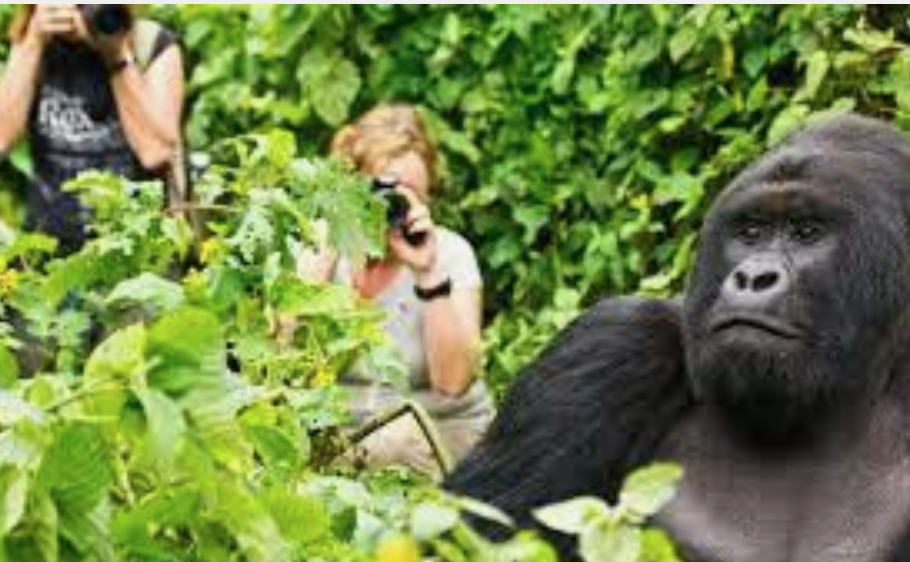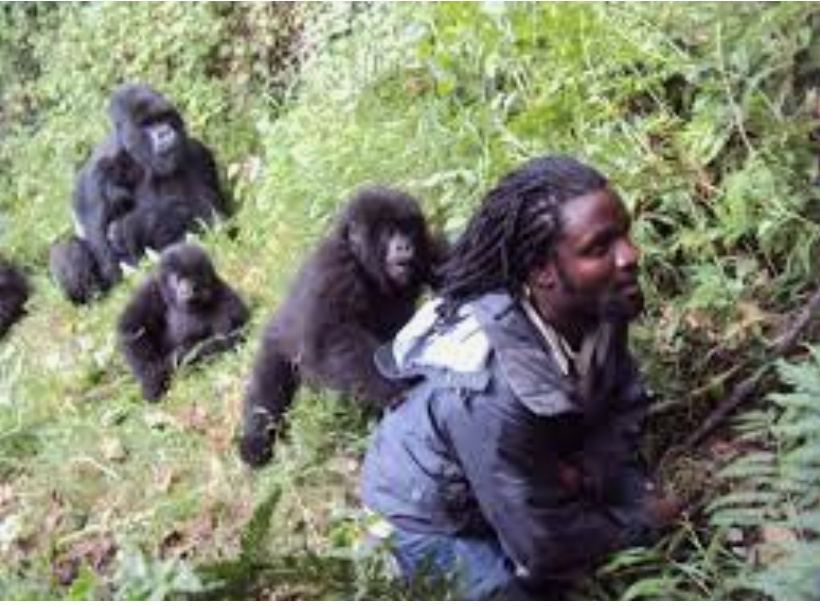Dian Fossey, Gorillas and Tourism*

There is more Good News in the World than Bad
Recently there was a good news story on 60 Minutes. It was about Dian Fossey, Gorillas and Tourism*
Dian grew up in California. ** Her parents divorced when she was six. She was not allowed to see her father, and her mother and stepfather were very distant and inattentive. They would not even permit Dian to sit with them at the dinner table.
This lack of emotional support from her parents made Dian insecure and introverted, leading her to find comfort from animals. Initially it was from her pet goldfish. She soon graduated to horses, eventually becoming an outstanding equestrian.
She was denied financial support from her family for education because she would not go to business school.
As a therapist she spent time with children and was very effective because, like the children, she was quiet and introverted. She continued to spend time with horses and other animals, much of the time as a volunteer.
She traveled to Africa to see the wildlife, using her own savings and borrowing some additional money.
It was here she became exposed to and fascinated by gorillas.

Through her guide and other people, she met Louis and Mary Leakey, the famous evolutionists who discovered many unknown fossils and connections between apes and humans
Several years later they encouraged and eventually funded Dian to come back to Africa and do research work with the gorillas in the Virunga Mountains in Rwanda.
En route to Virunga she worked with and learned from Jane Goodall who was studying chimpanzees in nearby Tanzania. Jane Goodall was also funded by the Leakeys.
Dian spent 20 years living by herself 9000 ft up the mountain studying the mountain gorillas. This earned her the African name “Nyiramachabelli,” or the woman who lives alone on the mountain.

She became quite famous and appeared in 1970 on the cover of the National Geographic. Her fascinating and groundbreaking work inspired many.
When she arrived in Rwanda there were only an estimated 200 gorillas and their numbers, partly because of poaching, were moving quickly towards zero – meaning total extinction.
In 1967, Dian Fossey established the Karisoke Research Center in Rwanda’s Volcanoes National Park. There are now about 1000 gorillas largely because of Dian’s research and advocacy work. This is one piece of good news, however, there is much more to the story. Dian became fanatical about her work resulting in her becoming controversial and colourful and, often unfriendly to local Africans.

She became even more convinced of the gorillas’ superiority after her favorite gorilla Digit was hacked to death by poachers. She started the Digit Fund (Now called the Dian Fossey Gorilla Fund) to raise money for research and protection.
She became even more famous because of her best-selling book, “Gorillas in the Mist” (1983), still considered to be the world’s most authoritative book on gorillas.

Her personal Good Works tragically ended when she was murdered (allegedly by her research assistant), in 1985. She was buried beside her beloved gorilla Digit. *
In the years following her death, her work has fortunately continued through her foundation and the Rwandan Government ** Much of the funding has ironically come from the tourists she despised.
The government sends 10% of the revenues to local villages who make the decision on what to do with the money. They have built schools, markets, health centres and new housing. They have also created new businesses, including starting a sewing industry.

Poaching has stopped and in fact some of the guides are former poachers. The plan is to increase the park size by 23%.
Some of the denuded land is being reforested which increases the capture of CO2. The Foundation raises money and does research. Tara Stoinski, the Executive Director of the Foundation says, “It is a fragile success.” ** When you think about it though, in my opinion the result is an amazing success and good happenings story.
This is a story of a young girl, largely ignored by her parents, who sought comfort from her goldfish, developed a passion for animals and became an outstanding equestrian. This passion led her to volunteering and studying animals, eventually living 20 years on a mountain researching and studying gorillas.
Her actions were instrumental in saving and understanding the mountain gorilla. She inspired others to become involved, not only in saving the gorilla, but also other endangered species as well.

The gorillas have become one of the most important parts of the Rwandan economy. It has further led to the awareness of and preservation of other endangered species, improvement in conservation, and our environment and encouraged thousands of others to volunteer.
This story is ongoing. In fact, a similar sequence of events could be the legacy of any volunteer who pursues a cause with passion and action.
Till next time,
Chris Snyder
* To see the complete story with Lesley Stahl, go online to 60 Minutes Mountain Gorillas (14 minutes)
https://www.cbsnews.com/news/rwanda-mountain-gorillas-60-minutes-2021-11-28/
** Most of this material is from Wikipedia and the 60 Minutes programme.
Malaria: At last a vaccine
You May Also Like

Cambodia!
January 13, 2019
Getting Along and the Golden Rule
July 31, 2022